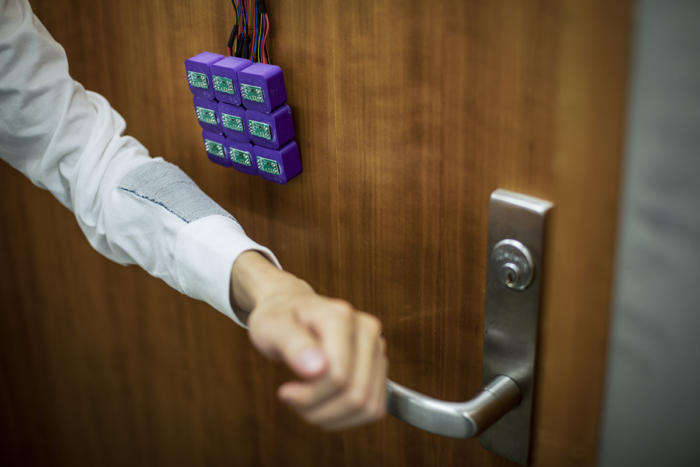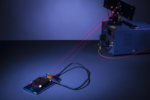High-density data could one day be stored in fabric patches embedded in people’s clothing, say scientists at the University of Washington. Importantly, it wouldn’t require electricity, so the smart-fabric could be washed or ironed just like regular clothing. That could make it more convenient than other forms of memory.
Off-the-shelf conductive thread, which the scientists say they recently discovered can be magnetized, is being used in trials. The data is read using a simple magnometer. The conductive thread is used commercially now in gloves for operating touch screens, for example.
“You can think of the fabric as a hard disk,” said Shyam Gollakota, associate professor in the Paul G. Allen School of Computer Science & Engineering at the University of Washington, announcing the breakthrough on the school’s website at the end of last year. “You’re actually doing this data storage on the clothes you’re wearing.”
In tests, the engineers stored a secure-area door-passcode on conductive fabric sewn into a normal shirt sleeve like the kind one puts on every morning. Swiping the cuff over the door-mounted interface unlocked the door.
Electronic-free storage
We’ve seen e-textiles, or smart garments, before. They include performance-enhancing fabrics made for regulating body temperature or to control muscle movement for athletes, as well as fabrics that light up or change appearance for fun.
But those technologies have generally required some form of power to function — sometimes batteries or sometimes from the environment by harnessing body heat for example. Electricity, though, in clothing, is a problem in the rain and for washing. Waterproofing needs to be built in. That’s hard to do.
Gollakota, however, says those things won’t be an issue with his gear.
“This is a completely electronic-free design, which means you can iron the smart fabric or put it in the washer and dryer,” he says.
How data is stored in cloth
Data is encoded by polarizing single-bit cells created in a strip of embroidered, magnetized thread. The directions North and South are programmed with a magnet and correlate with a 1 and a 0 bit. The data is then read — in the experiments using a smartphone’s compass function.
Un-magnetized parts of the thread separate the symbols to stop interference. It’s a “passive approach,” Gollakota says in his paper co-written with Justin Chan (pdf).
Embedded tech
Interestingly, we’ve been hearing about on-body (or even in-body) interfaces. RFID microchips, of the kind used in pets to identify them when they get lost, are being embedded between the thumb and forefinger by enthusiastic employees at some companies keen to authenticate photocopiers without having to remember to carry a key card.
And Facebook is apparently working on technology called a transcutaneous language communication (TLC) that will let people feel incoming texts through their skin when they can’t get to their phone. Words are converted into vibrations.
Mailonline wrote last month of a standard 3-D printer that can print biological sensors onto hands.
In the case of University of Washington’s magnetic smart fabric memory — while being less intrusive for the squeamish — its future efforts are being geared towards creating more powerful magnetic fields that would be able to hold larger amounts of data.
Conceivably then, one day we might see the ultimate in a low-latency data — it being on an actual person. Now, that’s an edge data center.





